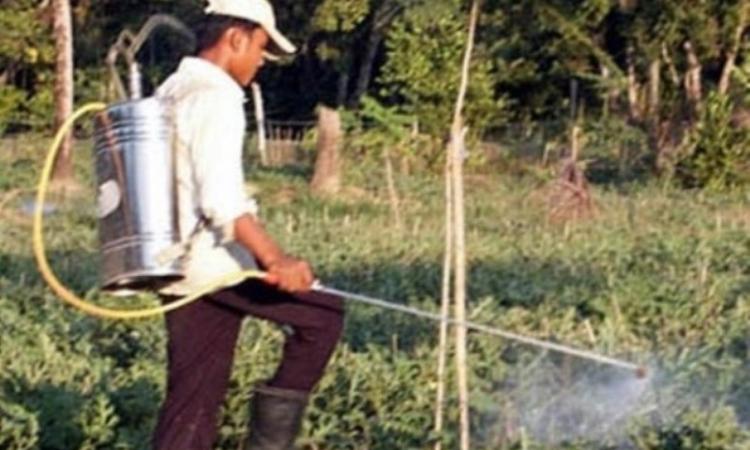
Endosulfan, a pesticide, has been banned in Kerala after its adverse effects were first realised in 1981. Shree Padre, a freelance environmental journalist, first brought out the consequences of using the pesticide by reporting on the various disabilities it caused among domestic animals and on the people of his village in Enmakaje panchayat of Kasaragod District. A study done by CSE on poisoning due to endosulfan confirmed the same [1]. Later studies also found that groundwater contamination with endosulfan continued to be high over the years and that the villages affected continued to lack safe water supply [2].
The article titled 'An Invisible Disaster - Endosulfan Tragedy of Kerala' published in the Economic and Political Weekly, describes the processes and the struggles that followed the controversy in Kasargod, and the economic and political forces that came together to push aside the struggles of affected individuals and communities, whose experiences contradicted the science-dominant public discourse in the state.
The anti endosulfan movement and the scientific debates used to challenge it
Public resistance to endosulfan started in 1985 following the report from Kasargod district. The main demands of the anti endosulfan movement were that it be banned, and that affected people be provided with proper compensation. Although the Government of Kerala temporarily put aerial spraying on hold in 1998, and a permanent ban on it came following a lower court verdict in 2001, there is still no agreement on the after-effects of the spraying in Kasaragod District for more than 20 years now.
The Stockholm Convention’s Persistent Organic Pollutants Review Committee agreed that endosulfan was a persistent pollutant in 2009, and undertook steps in April 2011 that resulted in a global ban but the Indian representative opposed the recommendation, and the central government allowed its use for 10 more years. This was on the basis that there was no scientific evidence which proved its negative effects, although field-based observations, studies, reports and experiences of the affected communities and the unique health issues encountered in 11 panchayats of Kasaragod District strongly indicated this link.
The C.D. Mayee Committee Report of 2004 that came out after 15 or more committees of medical doctors and other experts had examined the issue categorically rejected the demand to ban endosulfan by denying that it was the cause of diseases, contrary to what the people felt. The paper says that this report still continues to guide government policies. Barring a National Institute of Occupational Health (NIOH) Report (2002), all the other reports had raised doubts on whether endosulfan could be safely used, but they recommended a detailed epidemiological survey, which is yet to be initiated. A number of reports by government institutions and committees (the NIOH and the Indian Medical Association among them) have specifically mentioned the negative consequences of the pesticide. However, these findings have not helped. Objections have been raised about the method of assessment, and the methodological rigour of many studies and none of them have been able to challenge the evidence on the negative consequences of using the pesticide.
Economic and political arguments that support the use of endosulfan
Economic debates have raised objections on the grounds that other pesticides that are more expensive and harmful to the farm ecosystem will take its place, and will result in more damage. The other argument in its favour has been that it increases the productivity of small and marginal farmers. However, experiences in Kasaragod show that it led to a significant decline in cashew production compared to rubber.
Although political parties have expressed sympathy towards affected individuals, they have remained largely critical or silent on the issue of banning endosulfan and other toxic pesticides. Efforts to meaningfully reach out to the victims have been distorted for political gain, thus further marginalising them.
The continuing struggle of endosulfan victims to get recognition
The paper ends by arguing that even after 34 years, those who have suffered from the injurious effects of endosulfan have not been recognised as victims of a pesticide disaster. The state and central governments have not accepted them as endosulfan victims, and there have been many attempts to assert that it is a “safe chemical”. Although there has been a statewide ban, other harmful pesticides continue to be used.
The movement against endosulfan has helped bring the issue to light, but it has come nowhere close to ensuring proper compensation for the victims and providing them with assistance. The struggle of the victims to get recognition and compensation thus goes on while debates on endosulfan's negative effects still remain inconclusive amidst glaring evidence.
References
1. CSE (2001) A Centre for Science and Environment report on the contamination of endosulfan in the villagers. Downloaded from the website on 1st of June 2015.
2. The Hindu (2012) Groundwater remains polluted in Kasaragod. Downloaded from the website on 1st June 2015.
Please download a copy of the paper below.
/articles/poisoned-water